There are 63 national parks in the United States, and 40 are spread across the western states. Misty forests, majestic mountains, glaciers, wild rivers, stunning waterfalls, alpine lakes, dunes, caves, and ancient pueblos are just a few highlights of these magical landscapes.
Whether spending hours hiking through breathtaking forests or simply admiring the stunning views around you, visiting America’s western national parks is truly an escape from reality! Here are some of the treasures stretching from Alaska, Arizona, California, Colorado, New Mexico, Oregon, Wyoming, Washington, and Utah.
1. Visit Denali National Park for the Tallest Peak in North America
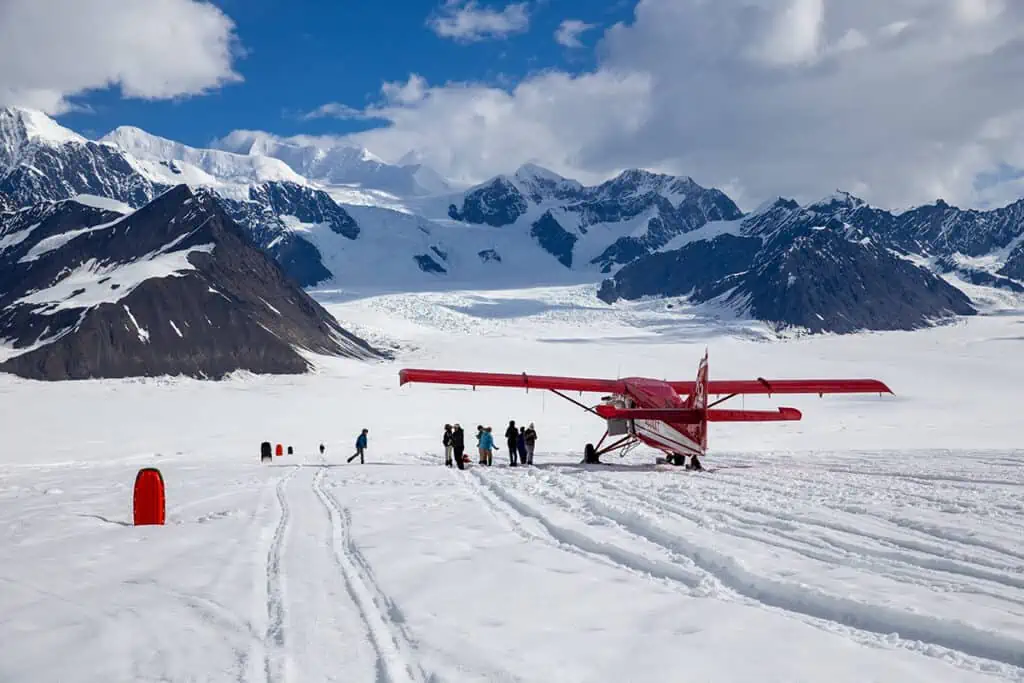
Denali National Park is a six-million-acre wildland crossed only by one 92-mile road. Access to the park is available through the NPS bus system, which offers three types of trips: non-narrated transit buses, narrated tour buses, and free buses. On each of these trips, it’s possible to encounter Denali’s Big Five: moose, bear, wolf, caribou, and Dall sheep.
If there is good weather, you can see Denali, the highest peak in North America at 20,310 feet. If you have experience with camping and backpacking, you can also pitch your tent at one of the six campgrounds in the park.
However, you should know that there is no telephone range or electricity. One of the most incredible adventures is taking a scenic flight over Denali with a glacier landing.
2. Gates of the Arctic National Park for the Brooks Range
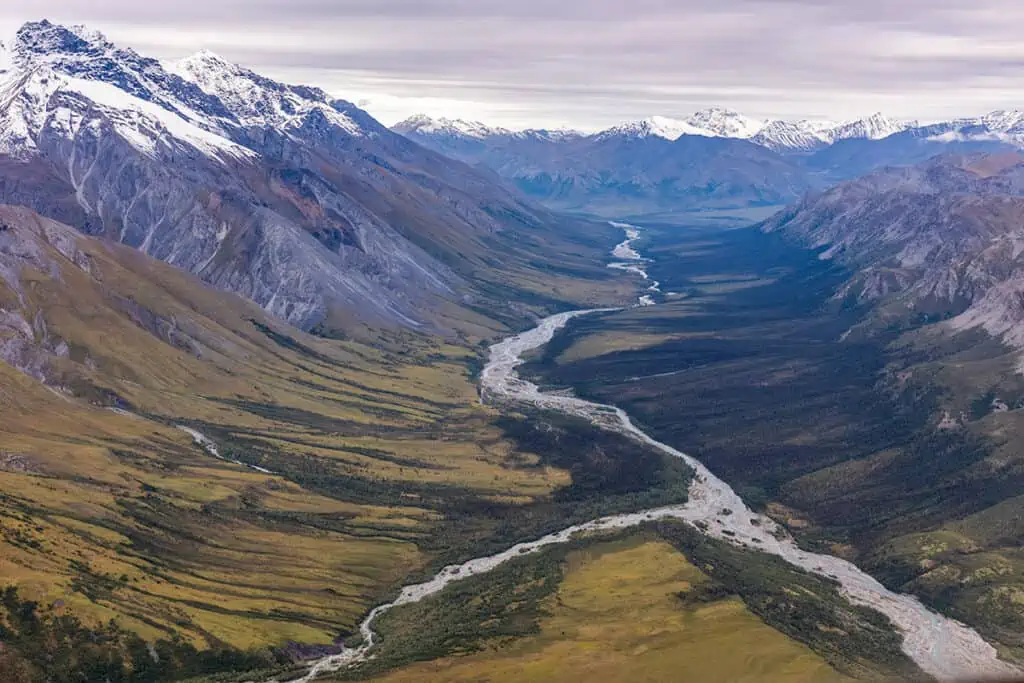
The least visited U.S. national park is Gates of the Arctic National Park and Preserve, receiving only 7,362 recreational visitors in 2021. In comparison, Denali was visited by 229,521 people, while the Grand Canyon had 4.53 million visitors in the same year.
Gates of the Arctic does not have roads, trails, cell service, or amenities. It’s one of the most remote and rugged parks you can visit, as it lies north of the Arctic Circle. A challenging hike from Dalton Highway or by air taxi is the only way to get in or out.
Backpacking, hiking, and rafting are the most popular things to do in the park. However, it’s a highly challenging environment, and visitors should be well experienced with outdoor wilderness and survival tactics. Those who don’t have backcountry skills can take a flight over Brooks Mountain Range by air taxi from Fairbanks or Coldfoot Camp.
3. Katmai National Park for Bear Watching
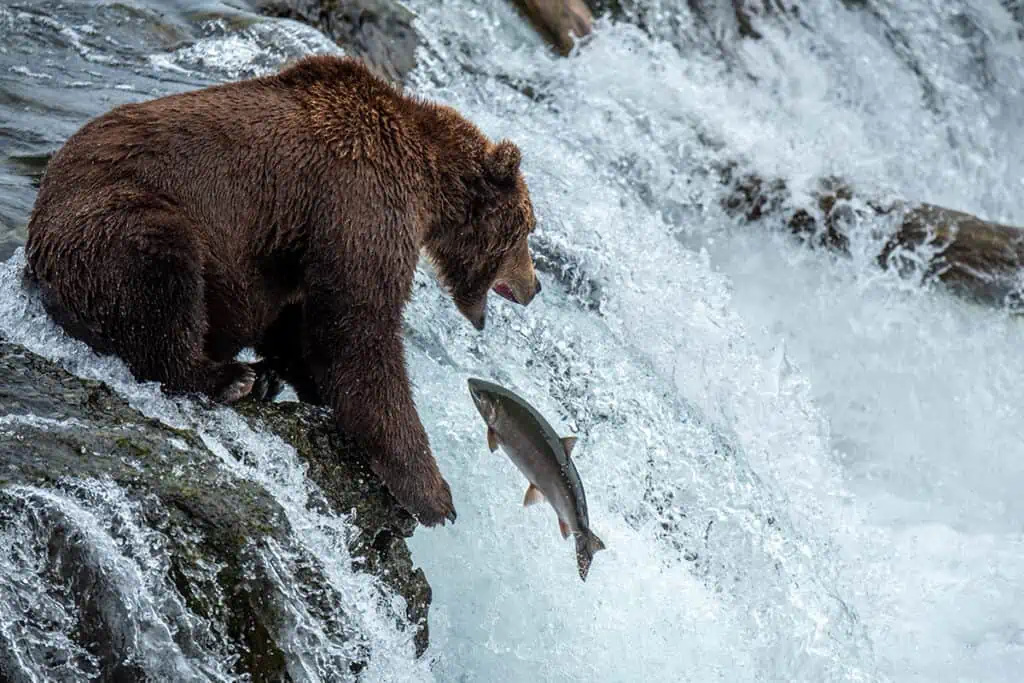
Alaska is home to approximately 98% of the U.S. brown bear population (grizzly bears) and 70% of the total North American population. An estimated 30,000 brown bears live in Alaska. In comparison, about 2,000 grizzly bears live in Montana and 600 in Wyoming. Katmai National Park and Preserve is undoubtedly the best west coast National Park for bear-watching.
The park is also known for the famous Brooks Falls, where brown bears catch salmon. Due to the limited infrastructure in the Brooks Camp, stays should be organized months in advance. The park cannot be reached by car because there are no roads. The only option is by air taxi or water taxi from King Salmon. Visiting Katmai is a great day trip from Anchorage or Homer.
4. Kenai Fjords National Park for Glaciers and Marine Life
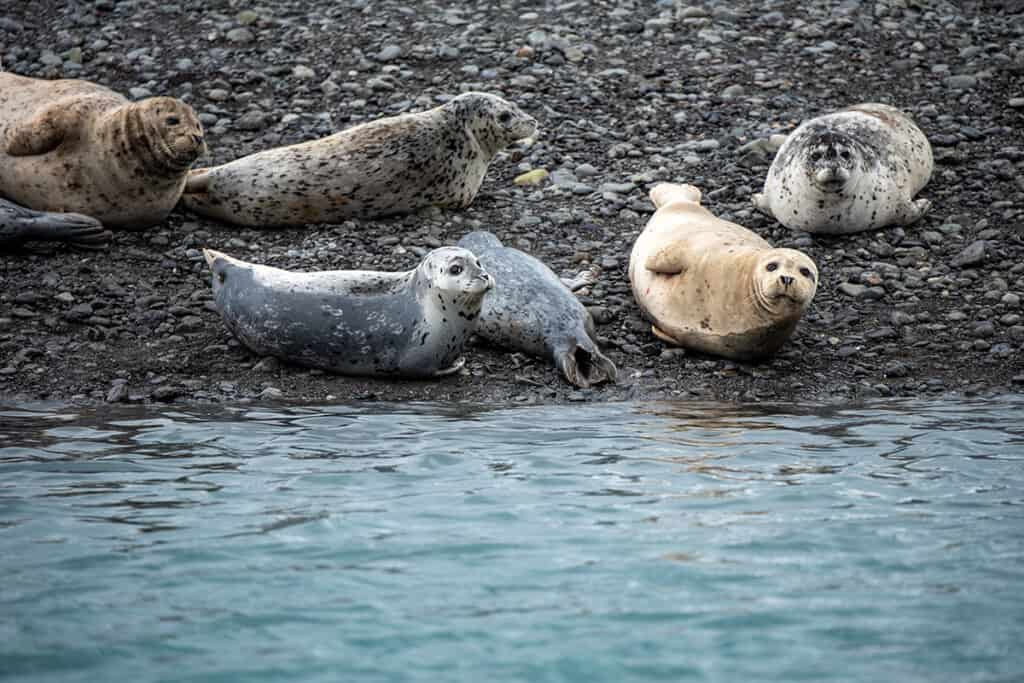
Kenai Fjords National Park and Preserve is the best west coast national park for watching marine wildlife and admiring glaciers. It is also worth adding that it is one of the more easily accessible national parks in Alaska. Which also makes it more affordable. You can get there in less than 2 hours from Anchorage to Seward via one of the most picturesque Alaskan roads.
One of the best things to do is take a Kenai Fjords Wildlife Cruise. Depending on the season, you can admire seals, whales (Humpback whales and Orcas), sea lions, sea otters, puffins, and other marine life. Alaska’s peak whale season is May – September.
Hiking at Exit Glacier is also a great activity while in Kenai Fjords. Hiking trails around the glacier have different degrees of difficulty, so choose your path accordingly. After an eventful day, it is worth trying local beer and food at Seward Brewing Company.
5. Wrangell – St. Elias National Park for Kennecott Copper Mine
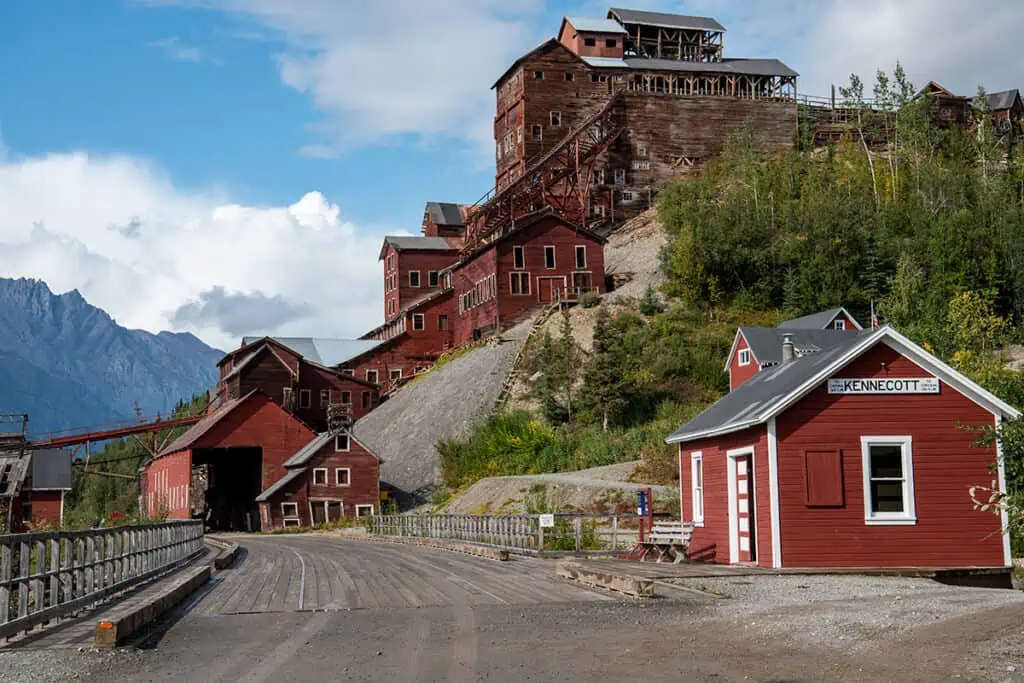
The largest national park in the U.S., Wrangell-St. Elias sits on 13.2 million acres. It accounts for 15% of all land designated for national parks in the U.S.
It’s an excellent park for mountaineering, glacier hiking, and backpacking if you are experienced in rugged and wild terrain. The park can be reached by car, but you need a 4WD vehicle with high suspension. If you rent a car for your Alaskan road trip, make sure the rental company allows you to drive the gravel routes.
McCarthy Road & Kennecott Trails give way to more accessible hikes such as the Root Glacier. In the heart of the park, you can visit the historic mining town of Kennecott, an excellent example of early 20th-century copper mining.
6. Saguaro National Park for Giant Cacti
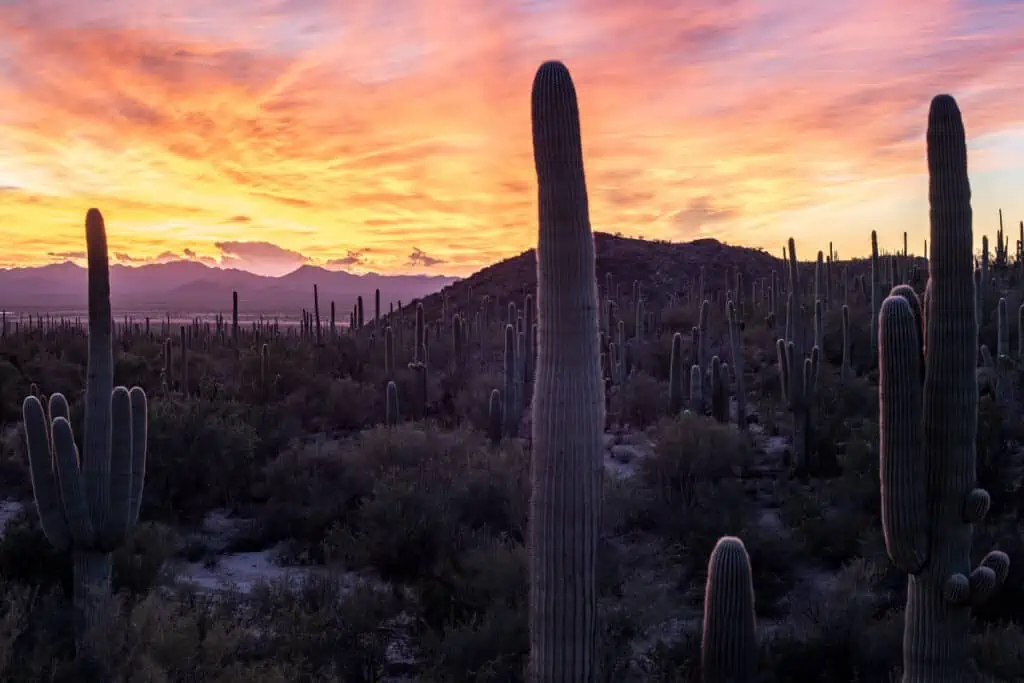
The saguaro cactus is the symbol of Arizona and is the largest cactus in the U.S. It is, on average, 40 feet tall, can live up to 100-200 years, and shoots its first arms around the age of 75. A great time to visit the park is when the cacti bloom in the spring. You will find real western vibes here, and the park is a classic example of a desert ecosphere.
Saguaro National Park consists of two parts, the eastern Rincon Mountain District and the western Tuscon Mountain District. Make sure to take scenic Cactus Forest Drive and Bajada Loop Drive. Go for a hike at Cactus Wren Trail, Mica View Loop, or Cactus Forest Trail. Wear shoes with stiff soles for hiking, as cactus spines are everywhere.
7. Grand Canyon National Park for Stunning Views
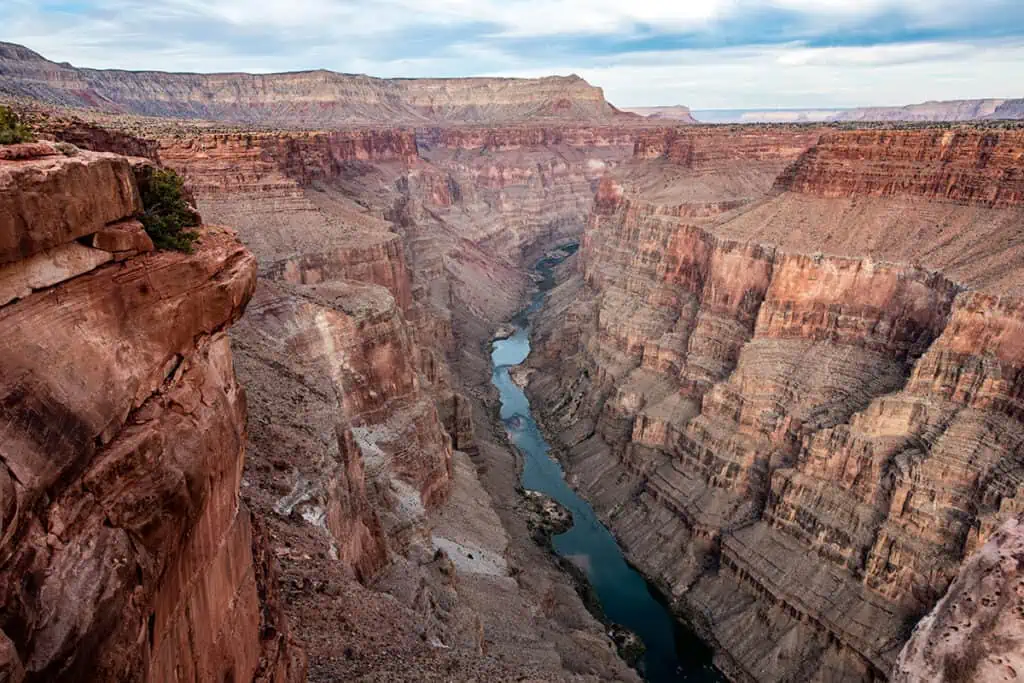
There are three national parks in Arizona. Due to the hot summers and desert climate, the best time for an Arizona road trip is spring and fall. Arizona is known as “The Grand Canyon State,” and the iconic Grand Canyon National Park is well worth a visit.
Formed over billions of years, the Grand Canyon leaves you speechless with its depth of over a mile (6,093 feet). The abyss, the Colorado River sound, and the red rocks are stunning. If you have to pick just one west coast national park, make it the Grand Canyon. The South Rim is open year-round, while North Rim is closed for winter.
During your visit, consider a helicopter ride over the canyon from Tusayan. The 12.8-mile-long Rim Trail offers excellent vistas, which can be hiked or visited via a free shuttle. For more experienced hikers, Bright Angel Trail to Plateau Point and South Kaibab Trail to Skeleton Point are great as day hikes. As well, make sure to visit the iconic Desert View Watchtower!
8. Death Valley National Park for Amazing Vistas
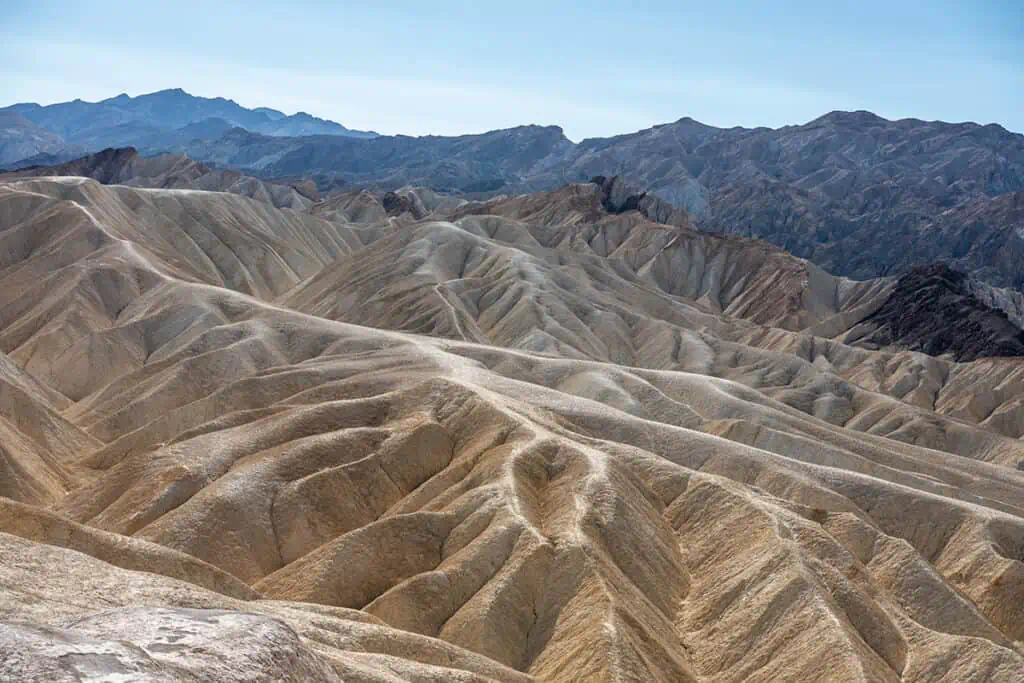
Death Valley National Park is North America’s lowest point, hottest, and driest area. Death Valley is no joke in the summer when temperatures can exceed 122°F, and the sand heats up to 201°F.
Walking on the cracked lake bed at Badwater Basin (282 feet below sea level) is one of the best things to do in Death Valley. Be prepared for extreme heat, protect your entire body from the sun, avoid hiking in the middle of the day, and take plenty of water and electrolytes.
9. Redwood National and State Parks for World’s Tallest Trees
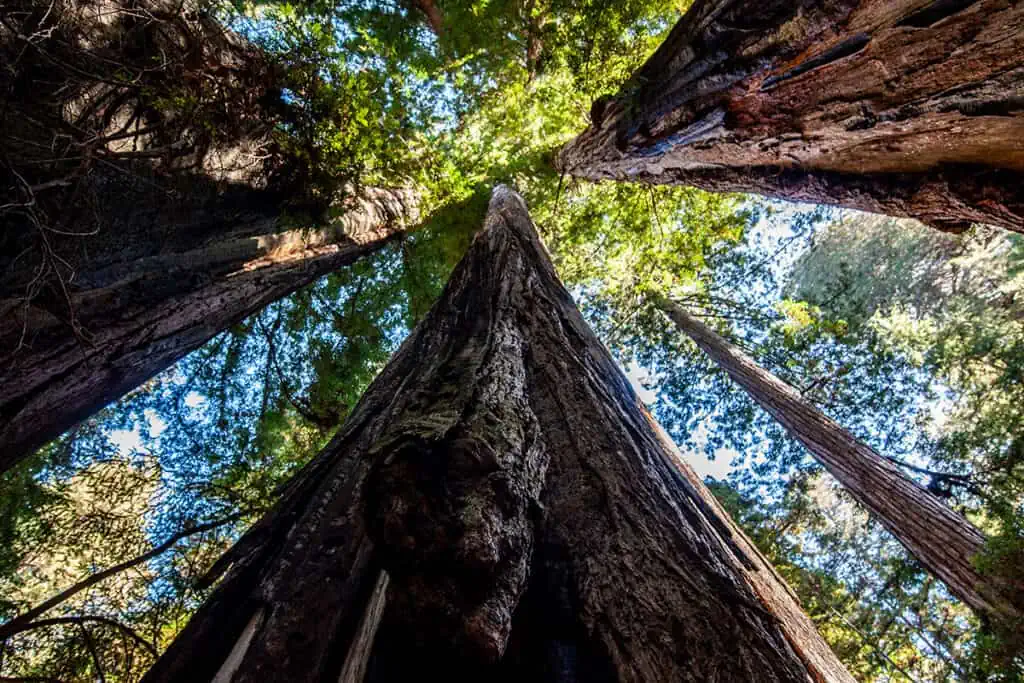
Another great west coast national park is Redwood, home to old-growth redwood forests. While entering these rainforests, you feel the power of Mother Nature among the most massive tree species on Earth.
The tallest redwood tree is Hyperion, at 379 feet, which is taller than the Statue of Liberty. Redwoods are the longest-living organisms on earth, as they live, on average, 500–700 years, but some have reached 2,000 years old.
Admire old-growth forests and wildlife, as it’s possible to spot banana slugs, gray whales, and black bears in this area. The best hikes are Tall Trees Grove Trail, Fern Canyon, and Prairie Creek & Cathedral Loop.
While driving along the Pacific Ocean coastline, stop at Klamath River Overlook, Crescent Beach Overlook, High Bluff Overlook, and Gold Bluffs Beach. And pack your binoculars, as November to December and March to April are whale migration seasons.
10. Sequoia & Kings Canyon National Park for the World’s Largest Trees
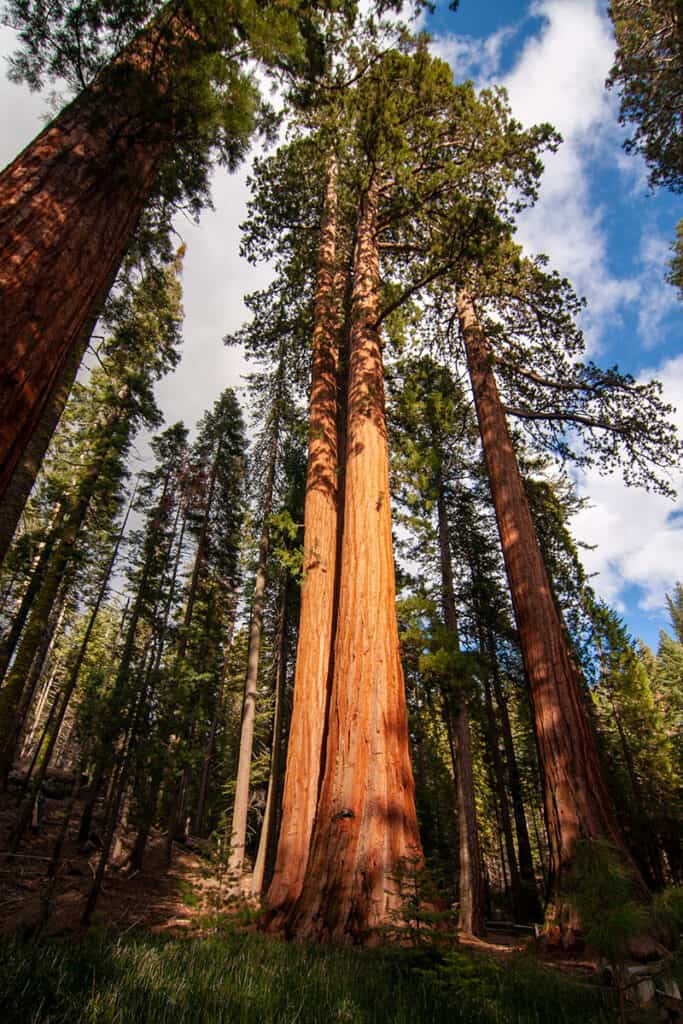
While coastal redwoods are the tallest trees, sequoias are the largest trees by volume. The General Sherman tree is the largest tree on Earth by volume, with a height of 275 feet, a diameter of 25 feet, and an estimated bole volume of 52,513 cu ft. It’s also 2,300–2,700 years old and the longest-lived of all trees on the planet.
The 50-mile-long Kings Canyon Scenic Byway takes you through one of the deepest canyons in North America. You’ll also want to take a ride through the fallen Tunnel Log. However, only vehicles shorter than 8 feet tall can drive through the 17-foot-wide tunnel. The marble Crystal Cave is an excellent option as it’s filled with stalactites and stalagmites.
11. Yosemite National Park for the Highest Waterfall in North America
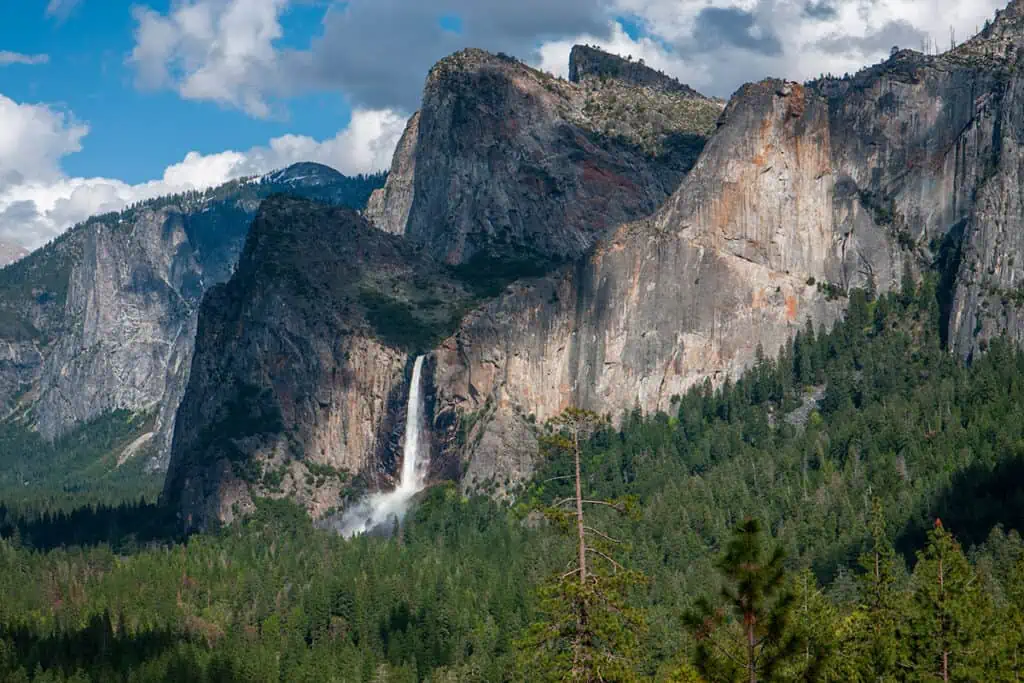
Yosemite National Park offers breathtaking vistas, waterfalls, granite cliffs, Sierra Nevada mountains, meadows, glaciers, and valleys. It’s a perfect place for hiking and backpacking. Yosemite is the oldest legally protected land in the U.S. (from 1864). What’s more, it’s also a UNESCO World Heritage Site.
Drive the Yosemite Valley Loop Trail to see El Capitan, Bridalveil Fall, and Sentinel Rock. The best photo opportunity for the u-shaped park is from Tunnel View. The hike to Yosemite Falls is strenuous, as it is 7.2 miles round trip trail. However, the vistas of the highest waterfall in North America, rising 2,425 feet above the valley floor, are well worth the effort.
You can also admire it from more accessible trails like Lower Yosemite Fall Trail or Cook’s Meadow Loop. And you must get a permit if you want to hike the iconic cables at Half Dome.
12. Black Canyon of the Gunnison National Park for Cliffs
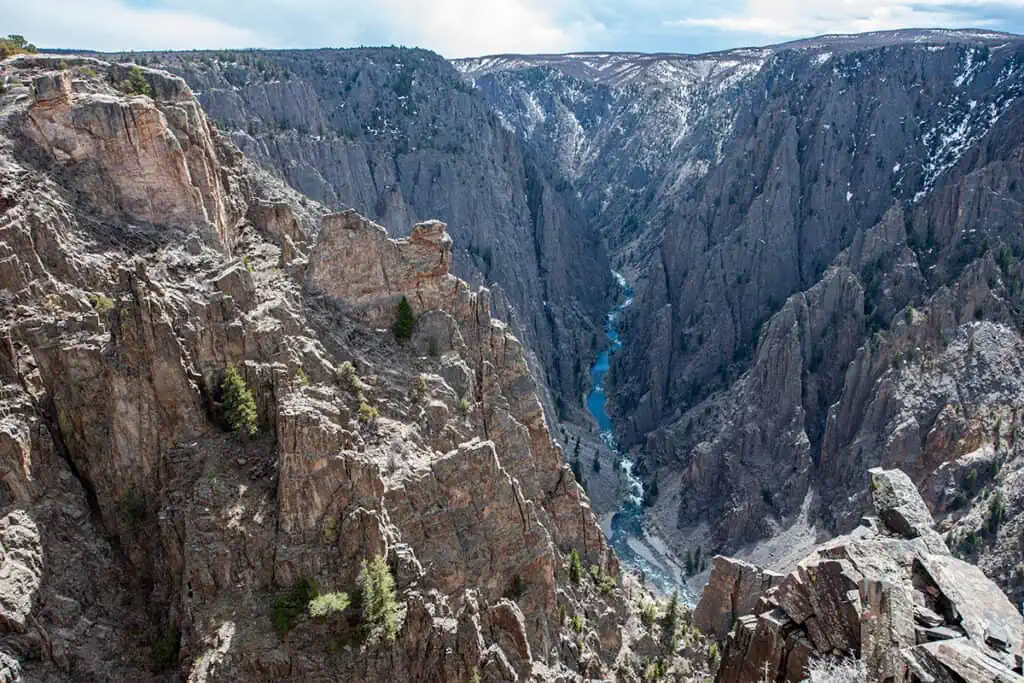
One of the least visited and smallest national parks is the Black Canyon of the Gunnison. If you’re planning a Colorado road trip, it is roughly four and a half hours from Colorado Springs and Denver.
Black Canyon of the Gunnison contains one of the most dramatic canyons in the country, with sheer walls of gray stone rising more than 2,700 feet above and the turbulent Gunnison River below. Because it’s so steep, sunlight has difficulty getting in, and parts of the canyon receive only 33 minutes of daylight per day.
The park consists of South Rim (open year-round) and North Rim (open from mid-April to mid-October). Go for a 3-mile hike to Exclamation Point, which offers the most dramatic and thrilling views of the steep gorge.
Drive North Rim Drive Road and stop at overlooks like The Narrows, Balanced Rock, and the Kneeling Camel View. Also, take the South Rim route and stop at the Painted Wall to admire the highest cliff in Colorado.
13. Great Sand Dunes National Park for Sand Sledding
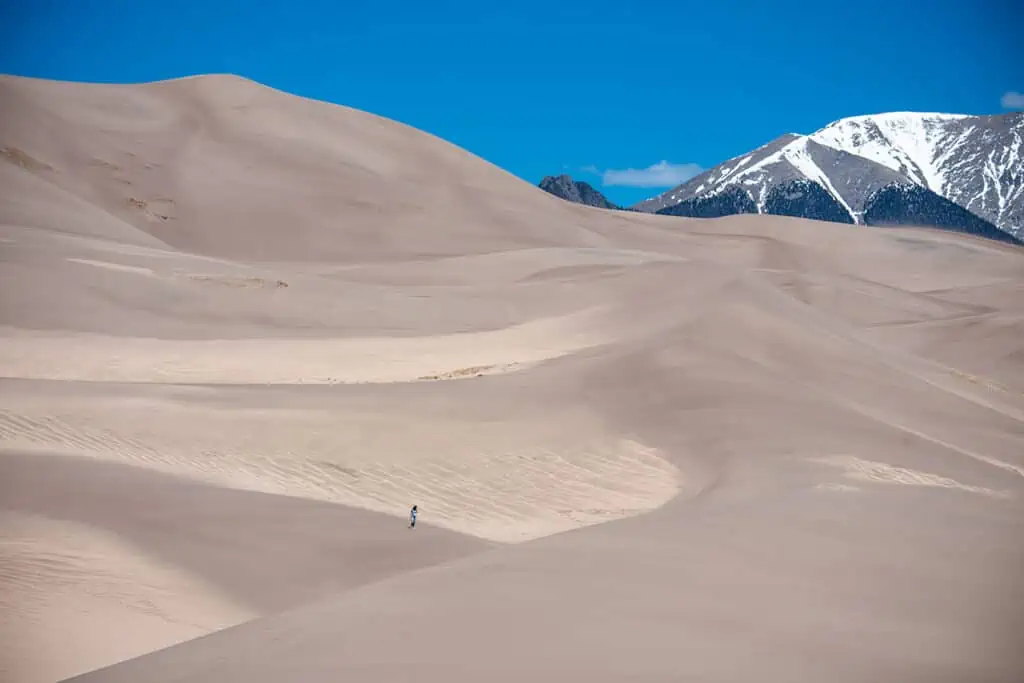
You can find the tallest dunes in North America in Great Sand Dunes National Park in south-central Colorado. Gusts of wind constantly shape this landscape, so it always looks slightly different. The surroundings and the background of the snow-capped Sangre de Cristo Range give the park a unique character. The dunes cover an area of about 30 sq mi and are estimated to contain more than 1.2 cubic miles of sand.
Sandboarding and sand sledding are the most enjoyable things to do in Great Sand Dunes. Hiking the dunes is also a great adventure, as there are no marked trails and walking in deep sand makes this activity quite challenging.
In the hot summer afternoons, the sand surface can reach 150°F. If you are experienced in driving in deep sand and have a 4WD vehicle, one of the best adventure things to do in Great Sand Dunes is drive Medano Pass 4WD Road.
14. Mesa Verde National Park for Cliff Dwellings
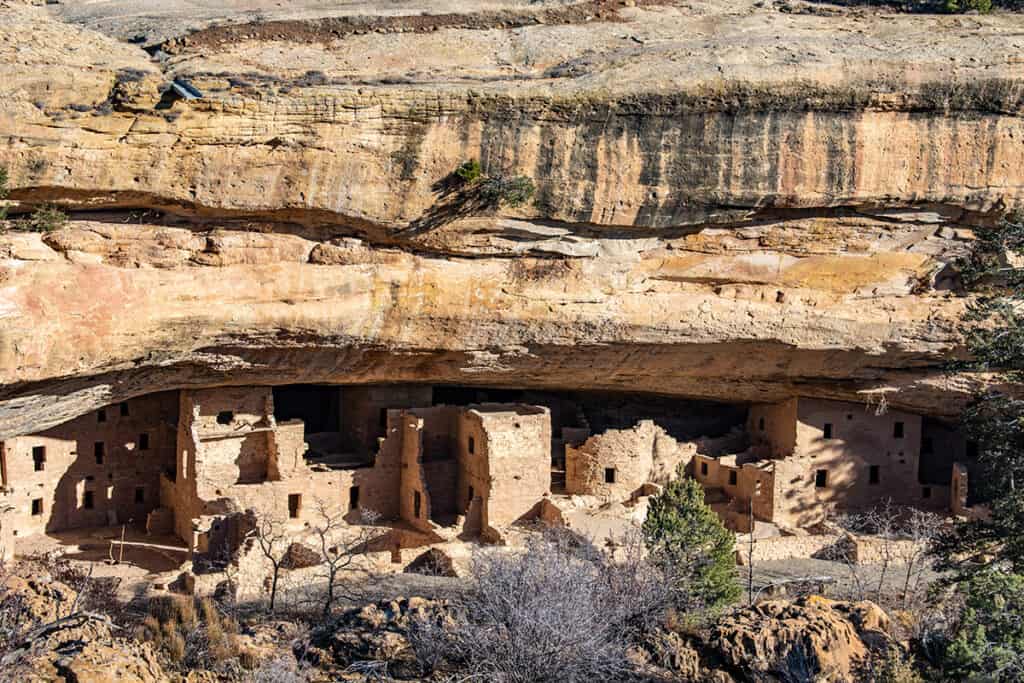
If you’re interested in American history and want to learn about the history of indigenous ancestors, Mesa Verde National Park should be on your bucket list. The main attraction of this park, which is also on the UNESCO World Heritage List, is the pre-Columbian pueblos built into the canyon wall by the Anasazi Indians. You will find 5,000 archaeological sites, including 600 cliff dwellings here. To this day, this place is sacred to the indigenous people.
The best way to experience the park is on a ranger-guided tour but book in advance as they’re popular. Visit the Cliff Palace, a world-famous masterpiece of architecture and design and the largest cliff dwelling in North America.
It’s also possible to explore the park on your own. Highlights include the Square Tower House Overlook and views of the Cliff Palace from Sun Point View and Sun Temple. Along the road, you’ll find short, easily accessible paved trails that lead to twelve archeological sites.
15. Rocky Mountain National Park for Hiking and Wildlife Watching
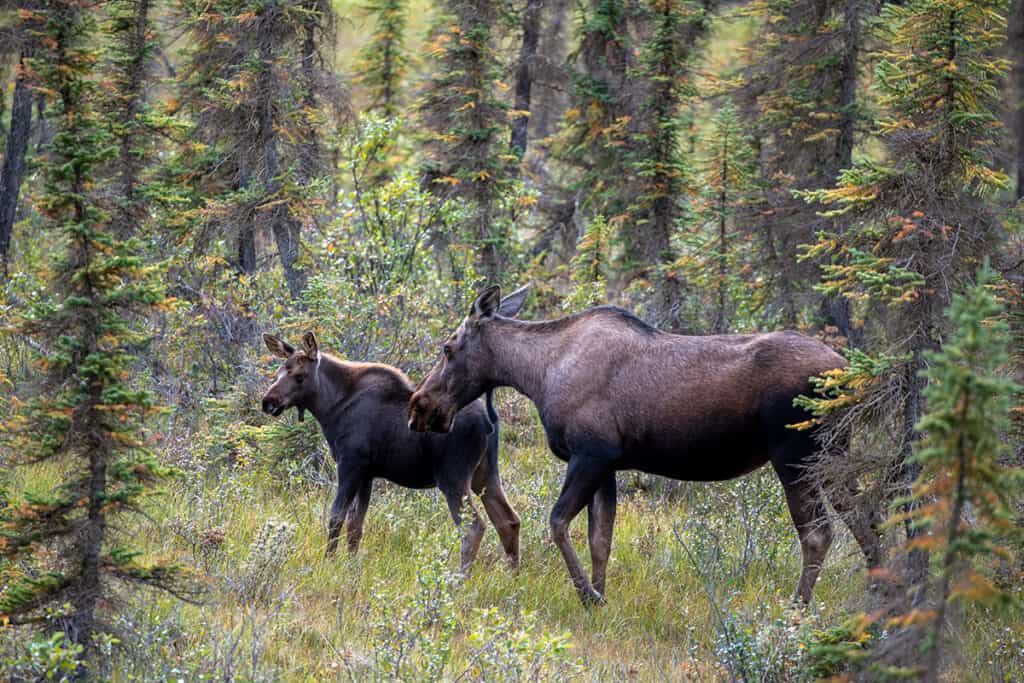
If you like hiking in the mountains and watching wildlife, Rocky Mountain National Park near Denver is one of the best west coast national parks for these activities. It contains 77 mountain peaks over 12,000 feet tall, alpine lakes, glaciers, meadows, and tundra.
It’s home to wildlife such as elk, moose, bighorn sheep, black bears, foxes, coyotes, and three hundred species of birds. Rocky Mountain is one of the top 10 most visited national parks in the U.S.
You’ll find over 300 miles of trails with varying degrees of difficulty here. The best hikes are Sky Pond, Chasm Lake, Twin Sisters, Continental Divide, Mills & Black Lakes, and Emerald Lake. More accessible hikes include Gem Lake and Bear Lake. Other popular park activities are horseback riding, bicycling, climbing, and wilderness camping.
16. Carlsbad Caverns National Park for a Fairytale Underground World
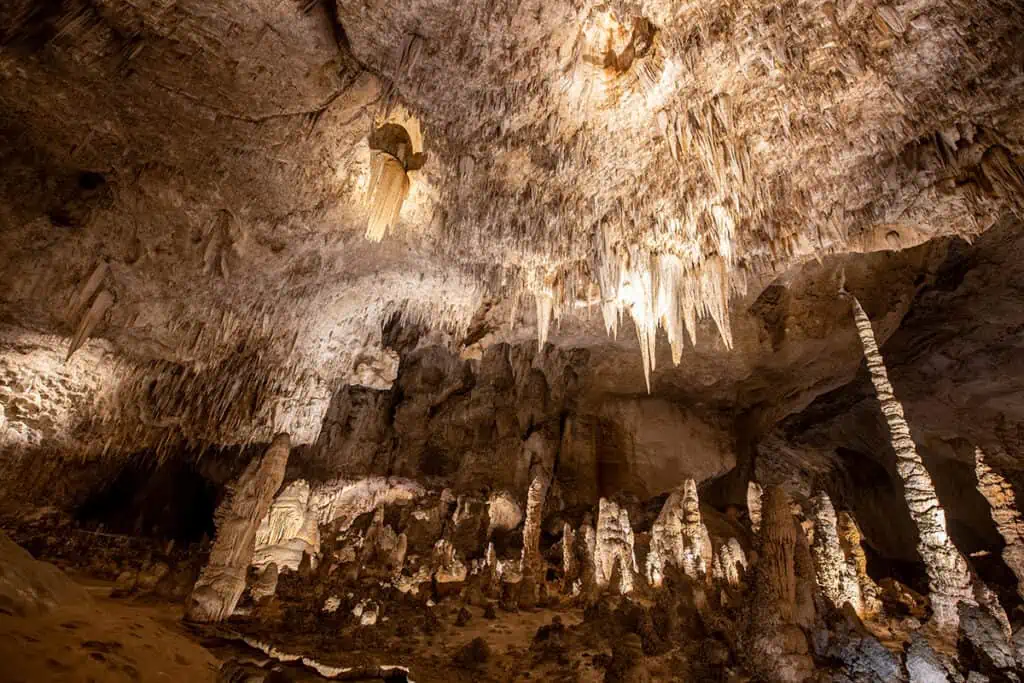
Located in the Guadalupe Mountains of southeastern New Mexico, Carlsbad Caverns National Park delights with its 119 caves filled with calcite formations, columns, stalactites, and stalagmites. One of the limestone caves – Big Room – is the largest chamber in North America at 4,000 ft long, 625 ft wide, and 255 ft high.
In addition, the park is on the UNESCO World Heritage list. Carlsbad Caverns is home to seventeen species of bats, with an estimated population of 793,000 at its peak.
If you visit the park from late May to October, you can watch bats in the Bat Flight Amphitheater. You have two trails to explore, the Big Room Trail and Natural Entrance Trail, each 1.25 miles long. You can enjoy your trip to the caves by elevator, hiking, or both. Some caves are available only as ranger-guided tours.
17. Crater Lake National Park for Deepest Lake
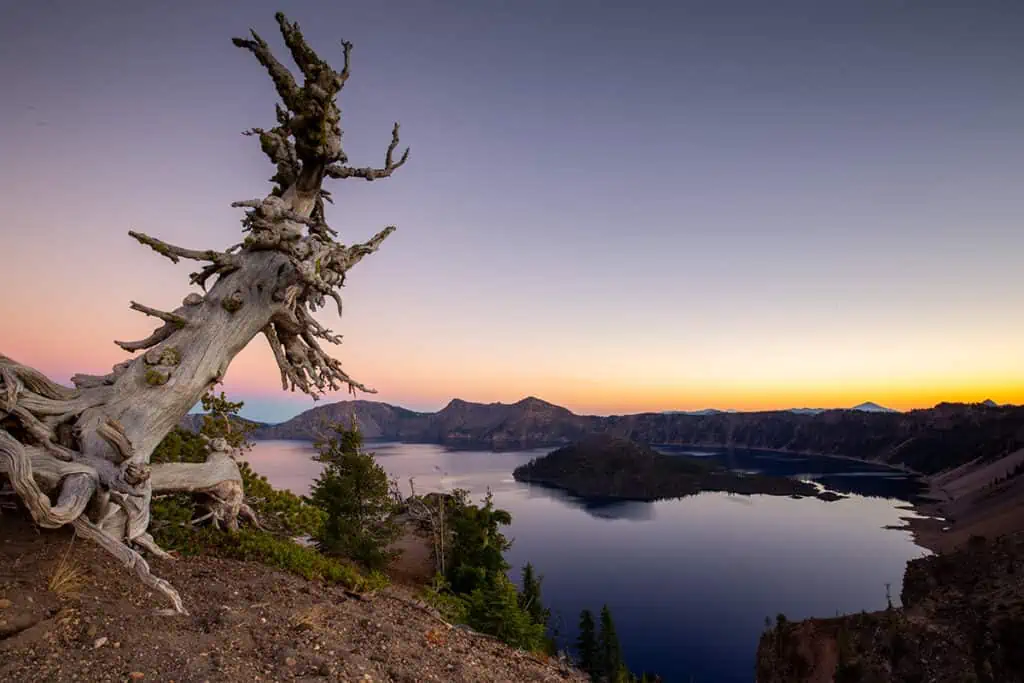
The sleeping volcano Crater Lake National Park is the only national park in the state and is an excellent option for an Oregon road trip. It’s worth putting on your bucket list for its spectacular views of a destroyed volcano’s caldera, hills, forests, and hiking trails along the rim. It’s also the deepest lake in the United States, the second deepest in North America, and the ninth deepest in the world, with a depth of 1,949 feet (594 m).
Due to the height above sea level of 7,000 to 8,000 feet and the harsh winters, the best time for a visit is mid-Jun to mid-September. During winter, some parts of the park are closed. Drive the historic Crater Lake Rim Drive, a 33-miles long road that offers panoramic vistas of the lake, forests, and meadows.
You have 30 overlooks for taking in the views and for photo opportunities. Consider a Crater Lake Boat Tour to Wizard Island. If you like icy water, you can even swim in the lake.
18. Arches National Park for Sunsets at Delicate Arch
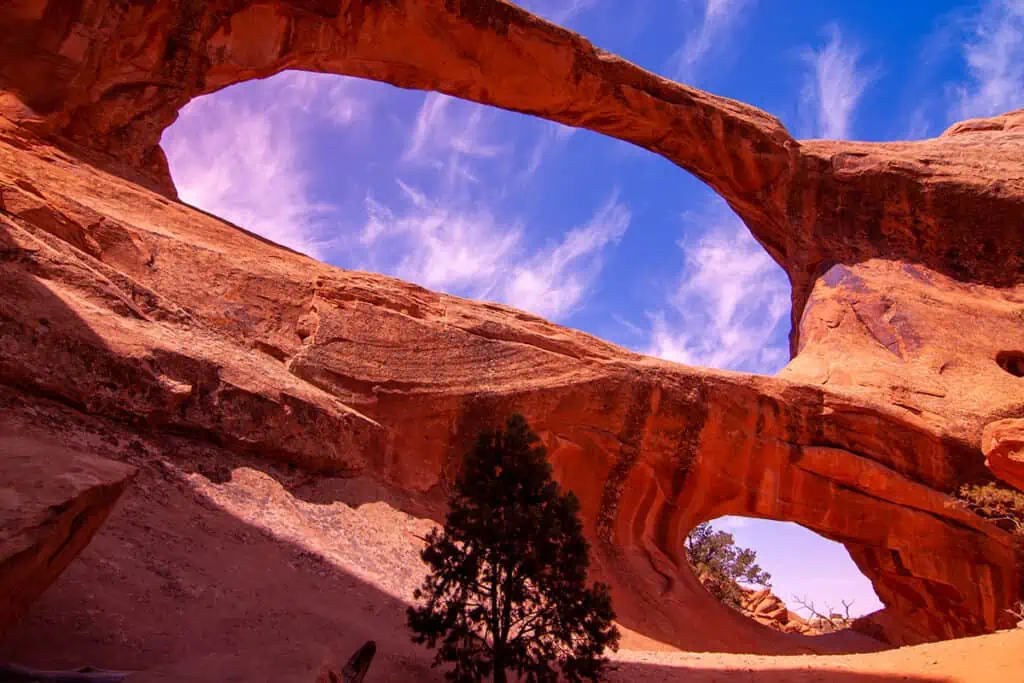
Arches National Park, an excellent stop on your Utah national park road trip, impresses with its unique rock formations. Over 2,000 arches, balanced rocks, fins, natural bridges, and pinnacles are carved from rusty red sandstone. It is a part of the Colorado Plateau, a high desert region that experiences wide temperature fluctuations, so wear layers during a trip.
Taking an Arches Scenic drive, which is 36 miles long round trip, is one of the best things to do in Arches National Park. The most famous natural stone arch in the world is the Delicate Arch.
Wear hiking boots with good traction, as stones are slippery, and pack a headlamp if you plan to return after sunset. More accessible hikes offering incredible vistas are Landscape Arch at Devils Garden, Sand Dune Arch, Balanced Rock, and The Windows & Turret Arch.
19. Bryce Canyon National Park for Geological Hoodoos
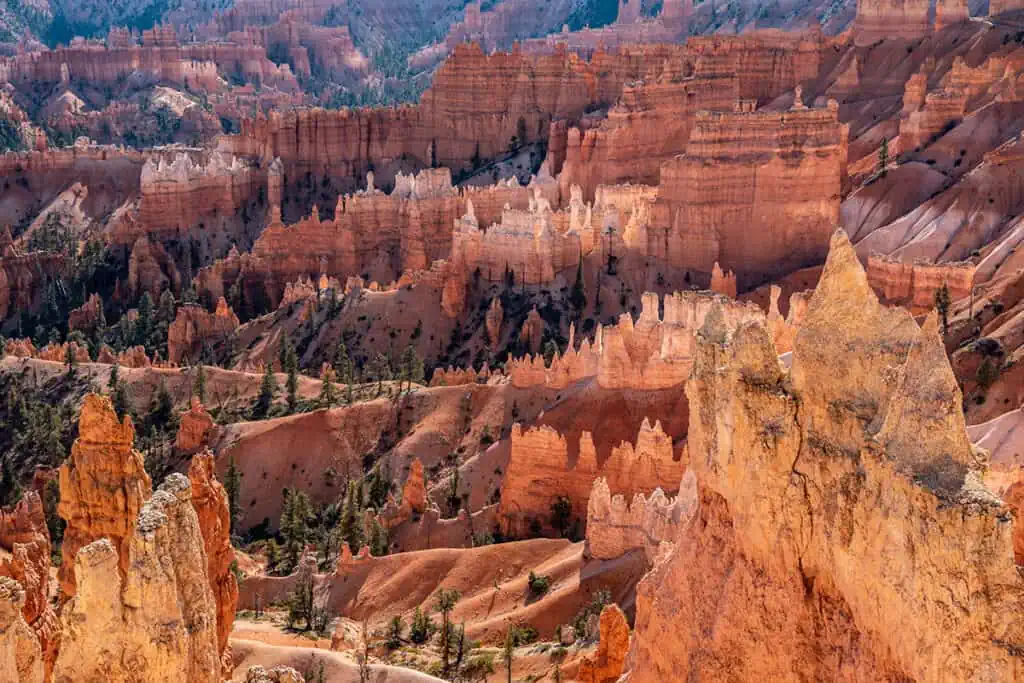
Thousands of hoodoos and irregular rock pillars are located in Bryce Canyon National Park. It’s the largest collection in the world, and any fan of geological wonders should put this park on their bucket list. They were formed by frost weathering and river erosion of the sedimentary rocks of the river and lake beds.
The rocks’ red, orange, and white colors make the Bryce Canyon amphitheater look like it is on fire. The rim of Bryce is at an elevation of 8,000 to 9,000 feet, so pack warmer clothes even for a summer trip.
One of the best things to do at Bryce Canyon is to take the 18-mile-long scenic drive. Due to limited parking spots, taking a free bus shuttle during the summer is ideal. Various hikes give you different perspectives and vistas of hoodoos. The most accessible hikes with spectacular views are Sunset Point to Sunrise Point, Queens Garden, and the longest Rim Trail.
20. Zion National Park for Towering Red Cliffs
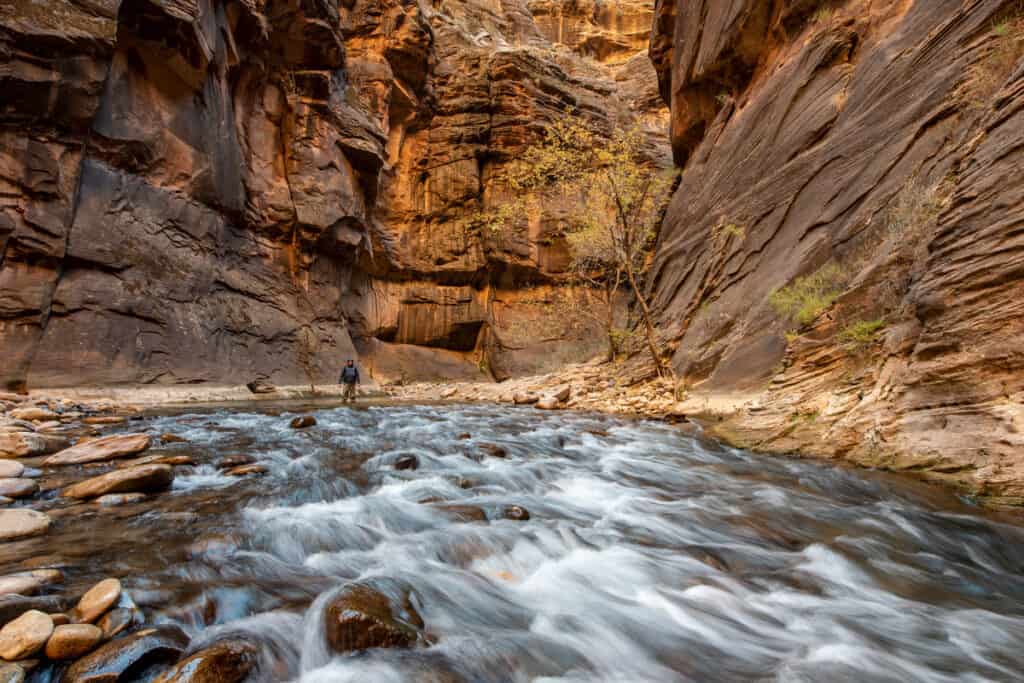
Utah’s First National Park was visited by over 5 million tourists in 2021 and ranked second only to the Great Smoky Mountains for the most visited national parks in the U.S. If you want to visit Zion National Park without the crowds, visit during early spring or late fall.
Zion Canyon offers breathtaking hiking opportunities at different levels of difficulty. The most challenging and original hikes are in the cold water when you are hiking in the area of the Vergin River, in the famous slot canyon, the Narrows, or the Subway. The water sometimes reaches the thighs and hips.
Famous Angel’s Landing is on the list of the most dangerous hikes in the U.S. Hikes that don’t require a permit include Pa’rus Trail, Lower Emerald Pool, Weeping Rock, Riverside Walk, Upper Emerald Pool, and Kayenta Trail. Make sure to visit Zion Human History Museum and relax in Springdale during your trip.
21. Canyonlands National Park for Sunrise at Mesa Arch
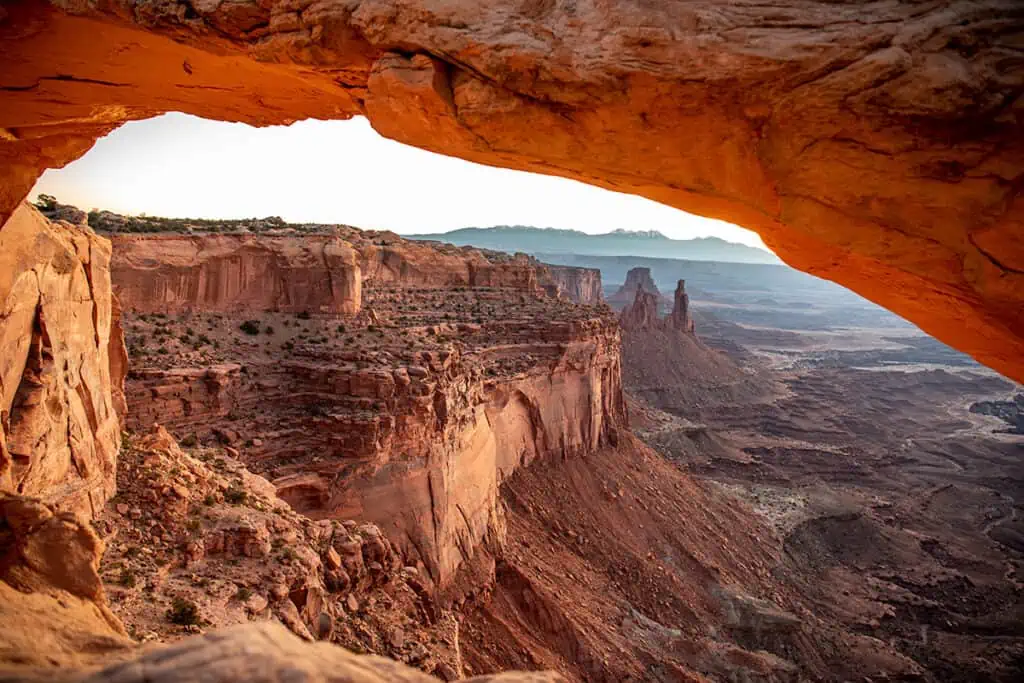
Located near Moab, Canyonlands National Park protects the magical landscape of mesas, buttes, and canyons created by the Colorado River and Green River. Canyonlands consists of four districts: the Island in the Sky, the Needles, the Maze, and the Rivers.
The park is less popular than the other Utah Mighty 5, but there are no crowds and breathtaking views. The climate is desert, and there is no cell service in the park, so pack well for your trip. There is no public transportation to the park, so the only way to explore it is on your own or as an organized tour from Moab.
The most accessible district is the Island in the Sky. Sunrises over Mesa Arch will make you speechless. The best sunset spot in Canyonlands is The Green River Overlook. For off-road lovers, there is a four-wheel-drive route called the White Rim Road, which is 100 miles long and requires a permit. One of the best things to do at Canyonlands is an adventure rafting trip on the Colorado River.
22. Capitol Reef National Park for Waterpocket Fold

The Red Rock Cliffs of Capitol Reef are underrated, as it’s one of the least visited west coast national parks. Moreover, the park is the most rugged and remote of the Utah Mighty 5. It protects colorful canyons, ridges, buttes, and monoliths of Navajo Sandstone cliffs. The most impressive formation is the Waterpocket Fold, a rocky spine extending 100 miles from Thousand Lake Mountain to Lake Powell.
The main road in the Park is Highway 24, following alongside the Fremont River. During your visit, stop at Panorama Point, Sunset Point, and Goosenecks Overlook. One of the most impressive rock formations is the Temple of the Sun and Moon in the Cathedral Valley district, but you will need 4WD to get there.
It also is worth exploring the historic town of Fruits in the heart of Capitol Reef. Stop at the Gifford House for handmade fruit pies, jams, and jellies. You can also see Fruita Schoolhouse, Blacksmith Shop, and Gifford Homestead, built in 1908.
23. Mount Rainier National Park for an Active, but Sleeping, Volcano
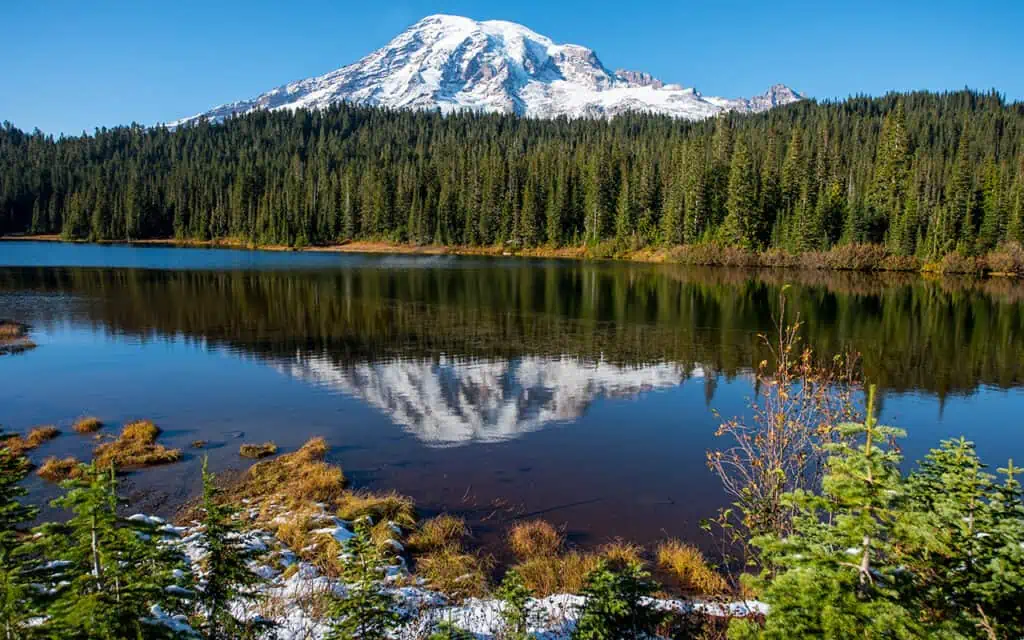
One of the most exciting places on the west coast is Mount Rainier National Park, which protects the highest peak in the Cascade Mountains. It sits 14,410 feet above sea level, and is an active volcano. If you’re taking a day trip from Seattle, it takes roughly two hours to get to Mount Rainier.
The mountain is surrounded by valleys, waterfalls, subalpine meadows, virgin forests, and over 25 glaciers. It’s a fabulous place for hikers, with over 260 miles of trails. The best time to visit is spring, when thousands of wildflowers bloom on the mountainsides, and 150 waterfalls are flowing.
Hike to Panorama Point and take short trails to Alta Vista and the Nisqually Vista. Take a picture of Mount Rainier’s reflections at Reflection Lake, or immerse yourself in an old-growth forest by taking the Grove of the Patriarchs’ hike. In winter, Mount Rainier becomes a skier’s paradise.
24. Olympic National Park for Rainforests of the Pacific Northwest
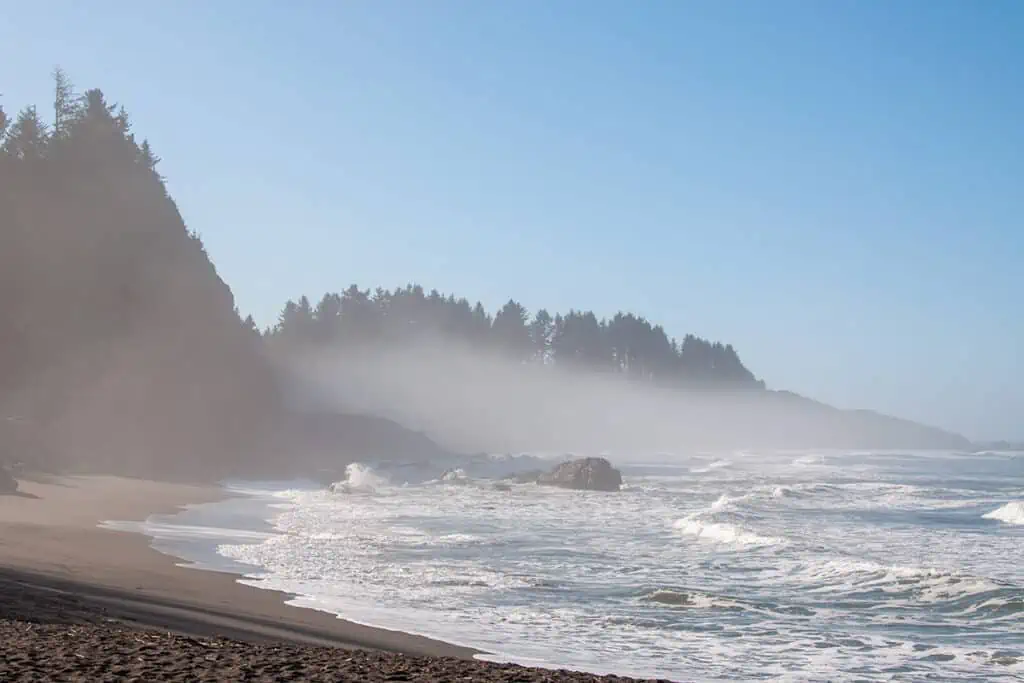
Olympic National Park is a gem of a west coast national park as UNESCO also designated it as an International Biosphere Reserve and a World Heritage Site. It protects old-growth temperate rainforests, including the Hoh Rainforest and Quinault Rainforest, and has over 70 miles of wild coastline.
Olympic National Park is one of the wettest areas in the U.S., so pack a rain cover poncho, waterproof clothes, and rubber boots. It is also chilly in the park, so remember to wear warm clothes even during a summer trip. Tall coniferous trees, including Sitka Spruce, Western Hemlock, Coast Douglas-fir, and Western redcedar, retain moisture and are covered with mosses.
During your trip, make sure to visit Shi Shi Beach, Rialto Beach with Hole in the Wall, and La Push Beaches. Some of the best hikes include Hall of Mosses in Hoh Rainforest, Hole in Wall Trail, Hurricane Hill, Spruce Lake Trail, and hike to glacially-carved Lake Crescent.
25. Yellowstone National Park for Geysers and Bison
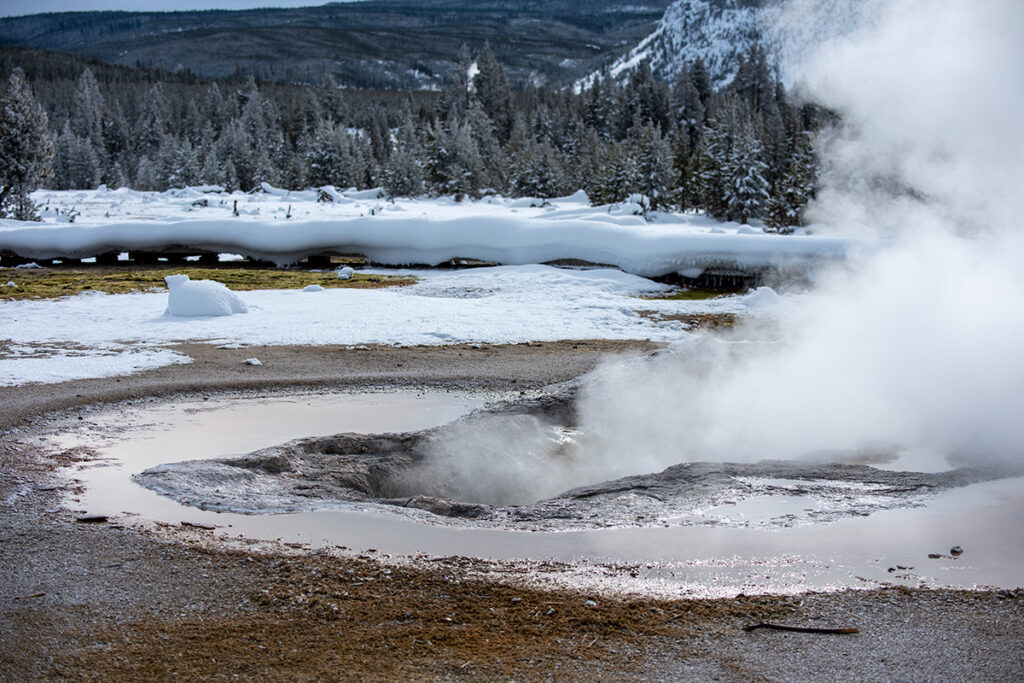
King among U.S. national parks, the oldest and the World’s First National Park – Yellowstone – should be on your national park bucket list. In 1872, Yellowstone was designated the first national park because of its unique hydrothermal and geological features. It’s also the largest U.S. national park outside Alaska. The park is home to about half of the world’s active geysers and geological wonders like the Grand Canyon of the Yellowstone River.
You can enjoy 10,000 geysers, hot springs, mud pools, rivers, waterfalls, and 1,000 miles of hiking trails at Yellowstone. It is an unforgettable experience to admire the park’s geyser eruptions and colorful hot springs. One of the most popular is Old Faithful, which erupts every hour and thirty minutes.
Take a picture of Lower Falls with the pink and yellow canyon walls at the Grand Canyon of Yellowstone. Admire wildlife, as Yellowstone is one of the best places in the U.S. (outside Alaska), where you can spot grizzly bears in their natural habitat. Moreover, you will find the world’s largest wild bison herd here. Lamar Valley is also home to gray wolves, moose, coyotes, bald eagles, and more.
Plan Your West Coast National Park Adventure
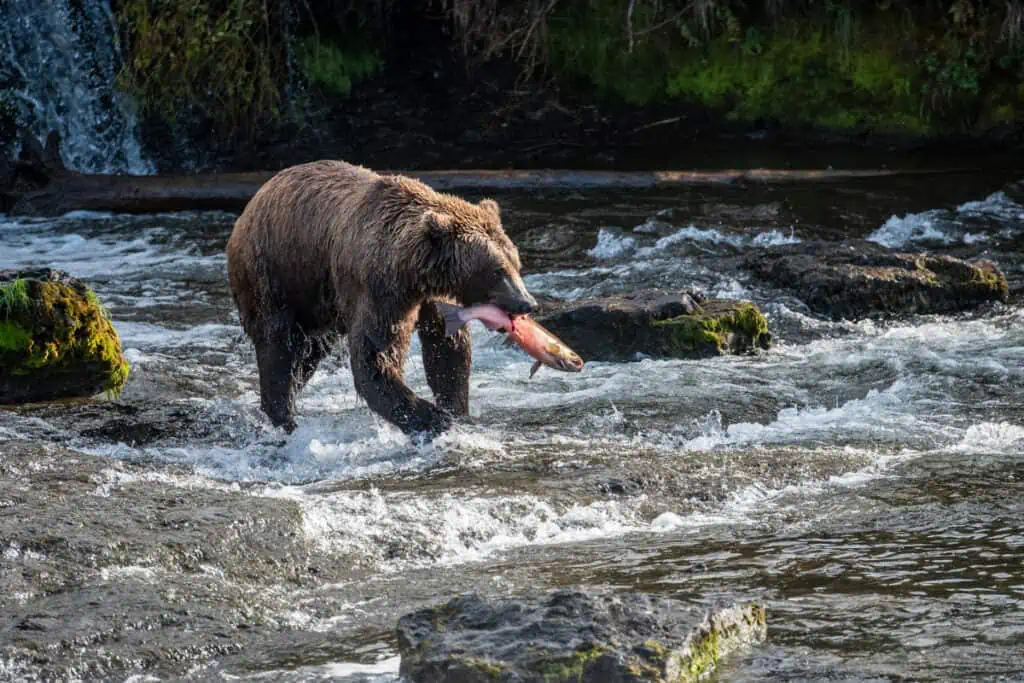
- Before visiting any national park, check the NPS website. It is the most reliable source of information on the current conditions, closures, rules, and alerts. Be sure to check the weather, as well.
- Almost all national parks have an entrance fee. The America the Beautiful Pass is affordable if you visit at least three national parks in a year. It costs $80 and is valid for one year.
- National Parks are a natural and cultural heritage. As visitors, we must take care of them and leave them intact for future generations. Make sure to follow the seven principles of Leave No Trace.
- Respect wildlife. Do not approach wild animals, and don’t feed them. Observe wildlife from a safe distance.
- Pack carefully for your trip. Bring layers and always pack extra clothing, water, and food, in case of a sudden change in weather or you get lost on a trail. Cell service is limited in the parks, so keep that in mind, especially if you will be hiking or camping.
Western U.S. National Parks
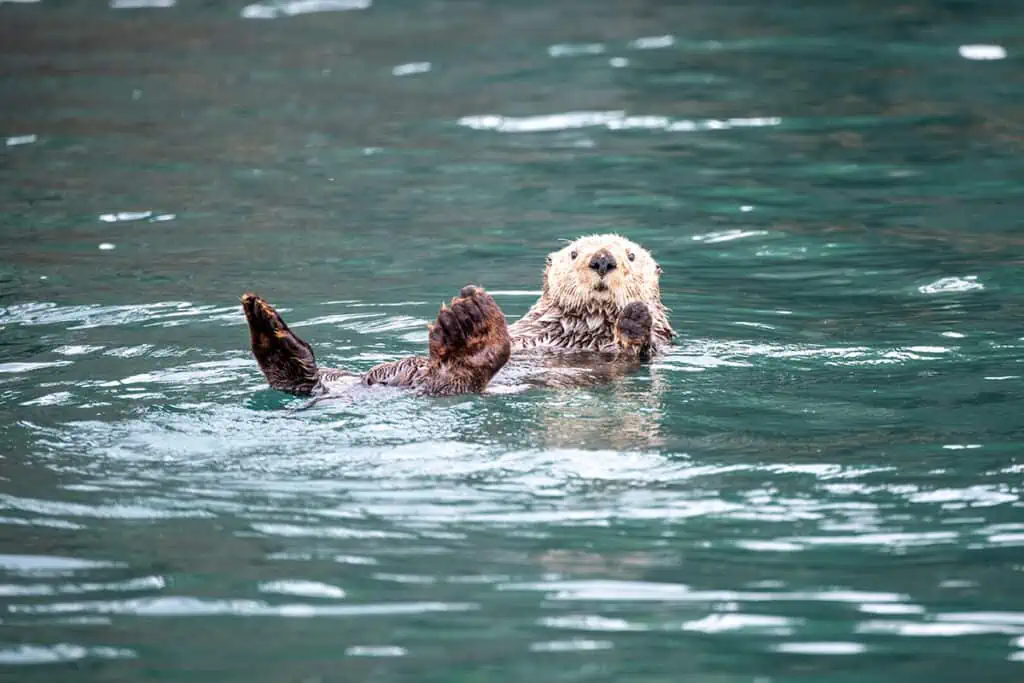
Visiting the majestic western national parks of the U.S. is a great way to spend your next vacation! Take in lush green meadows and experience wildlife adventures like never before. With trails that range from easy nature walks to multi-day hikes, there are opportunities for everyone to explore these fascinating natural wonders firsthand.
For those seeking a cultural experience, some famous national parks have historical landmarks and museums to explore. From dense forests of giant redwoods to alpine peaks and shimmering blue lakes, outdoor enthusiasts of all ages can find something to enjoy.
This article 25 West Coast National Parks For Your Next Outdoor Adventure originally appeared on Wander With Alex.
Agnes Stabinska is a photographer, content writer, and co-owner of TheVanEscape.com blog. She loves wildlife, landscape photography, and outdoor adventure in U.S. national parks. Together with her partner Chris, they travel around America. On their blog, you’ll find ready-made itineraries, tips, and essential tools to prepare for your unforgettable journey.